
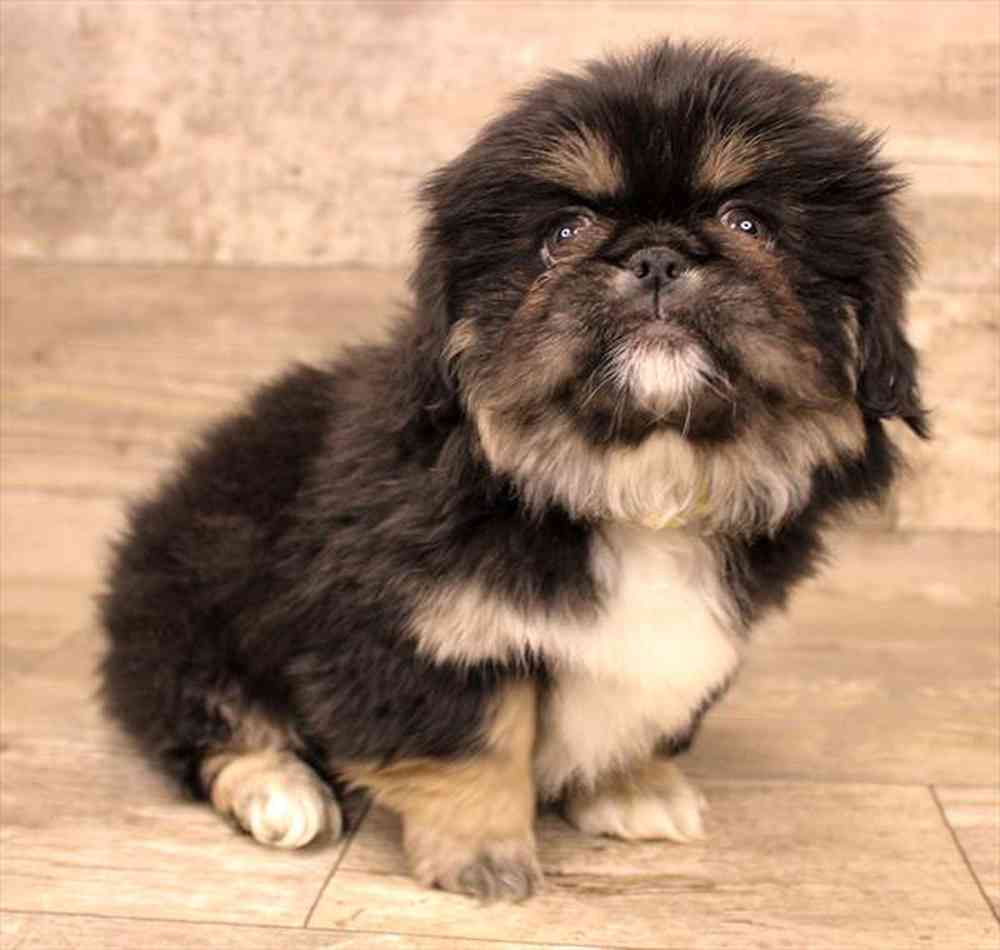
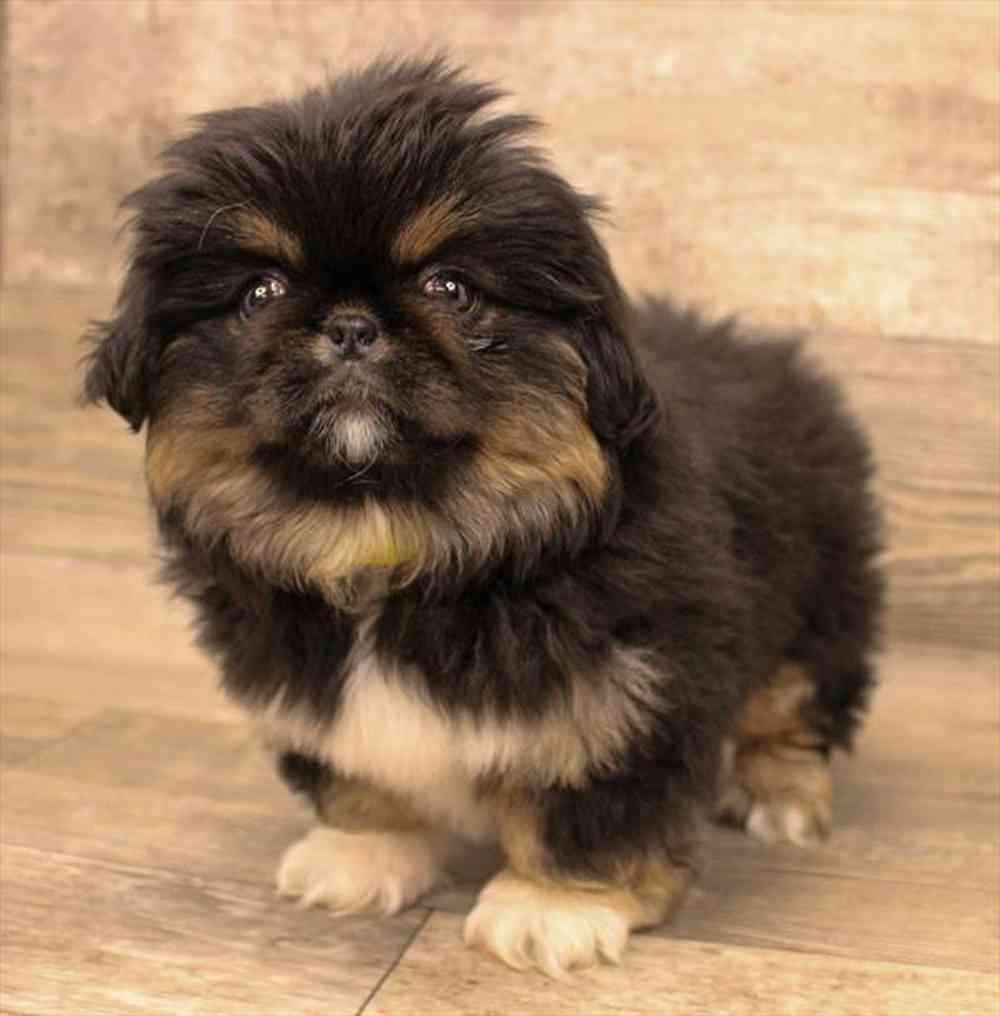

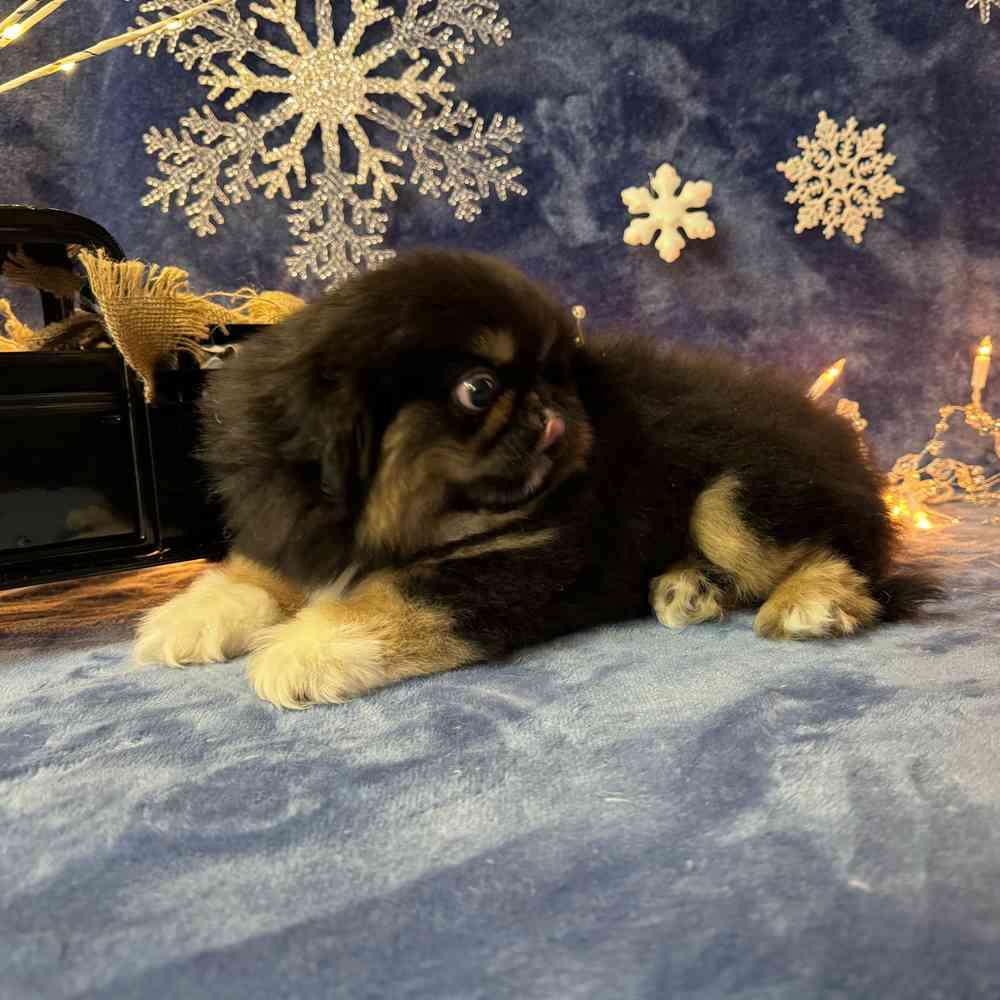
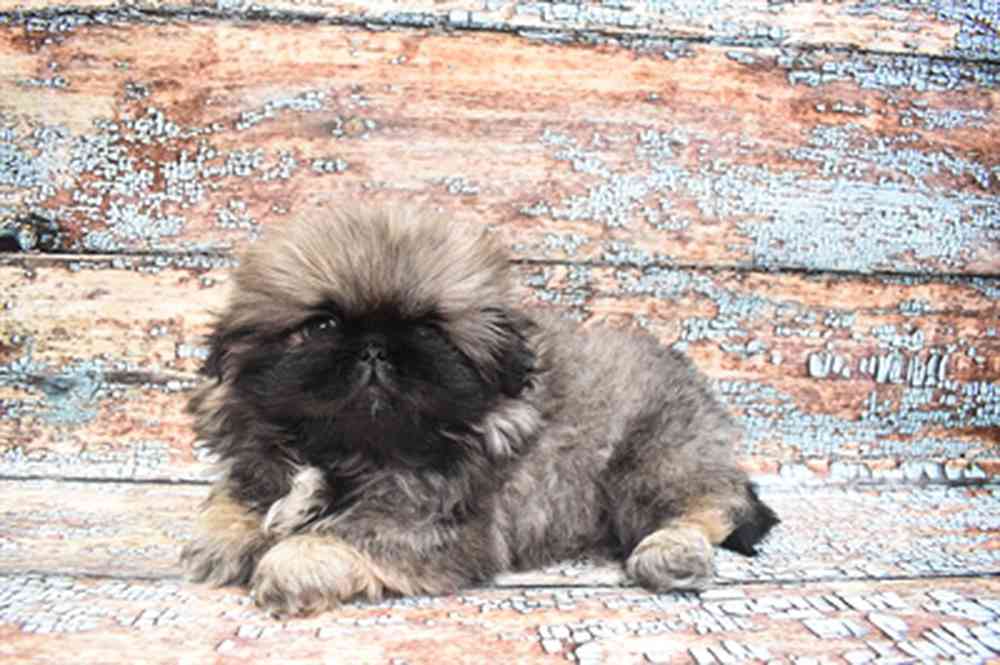
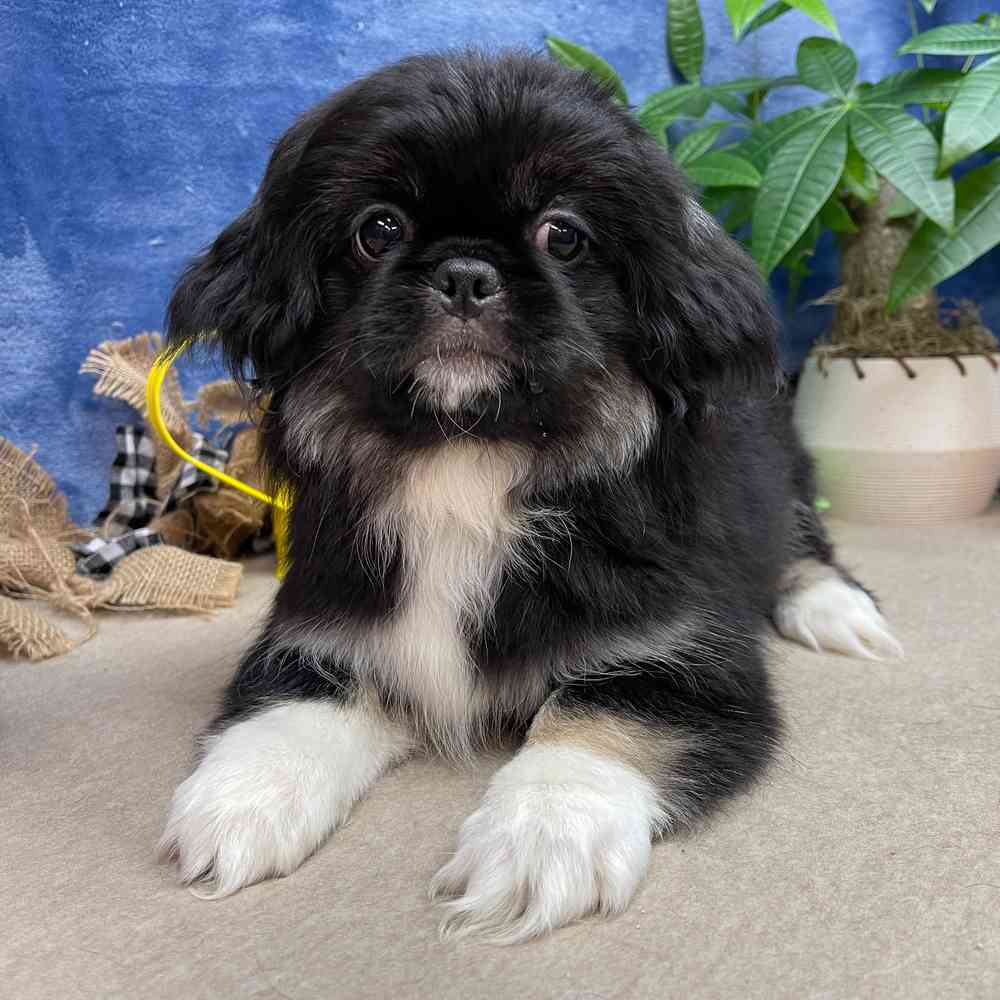


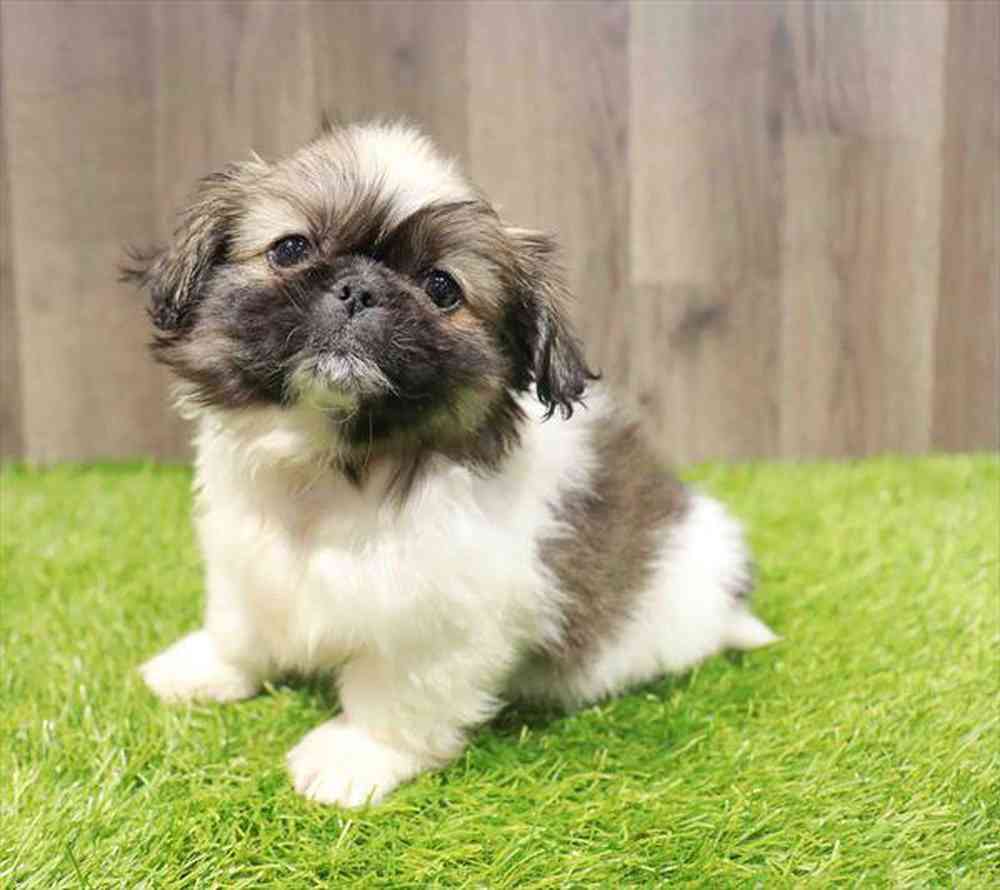
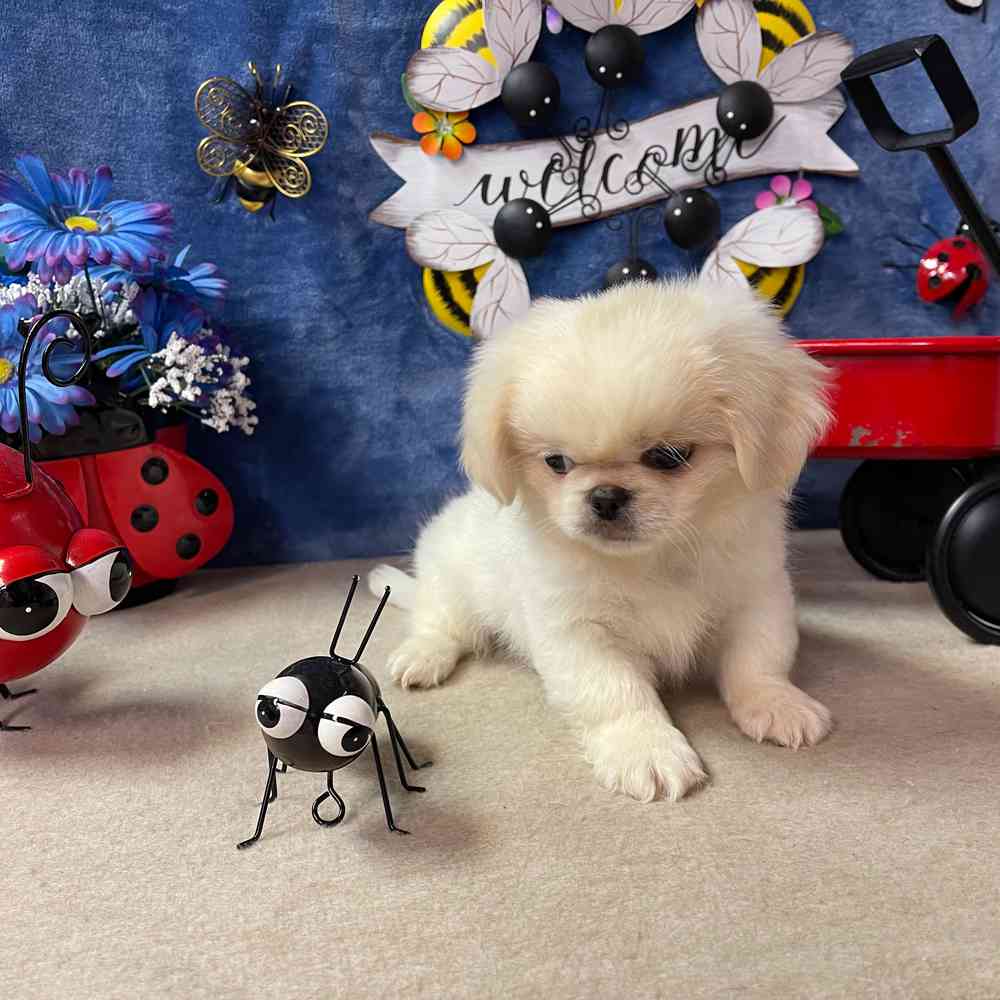
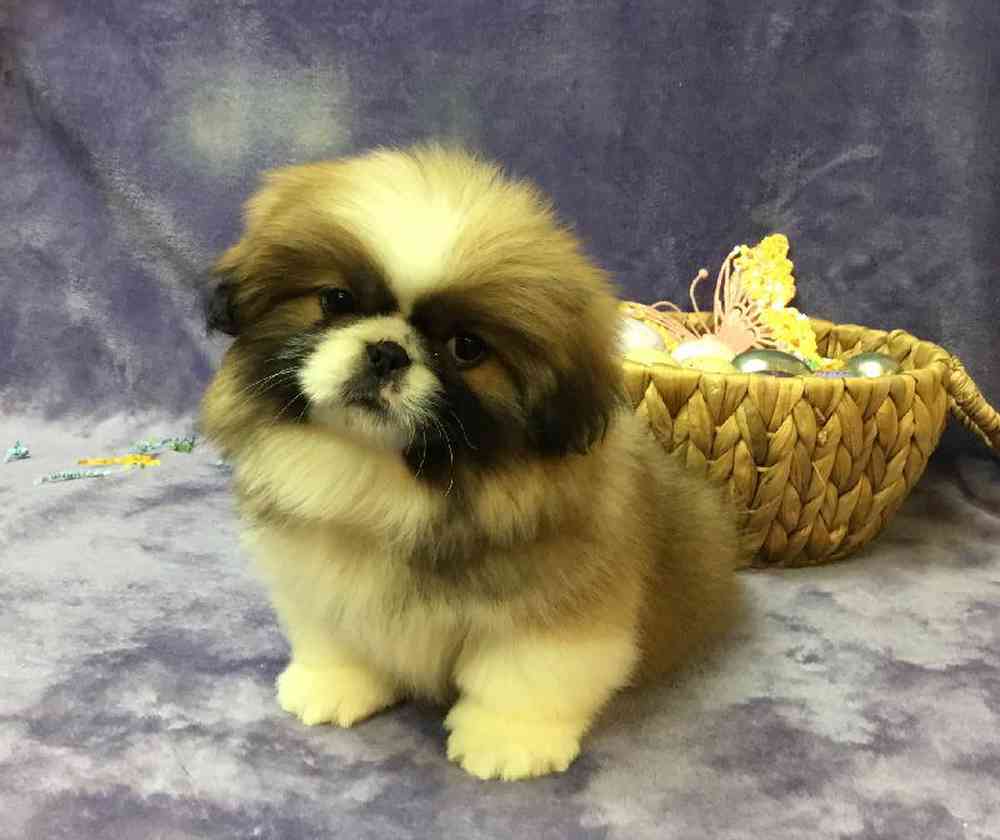
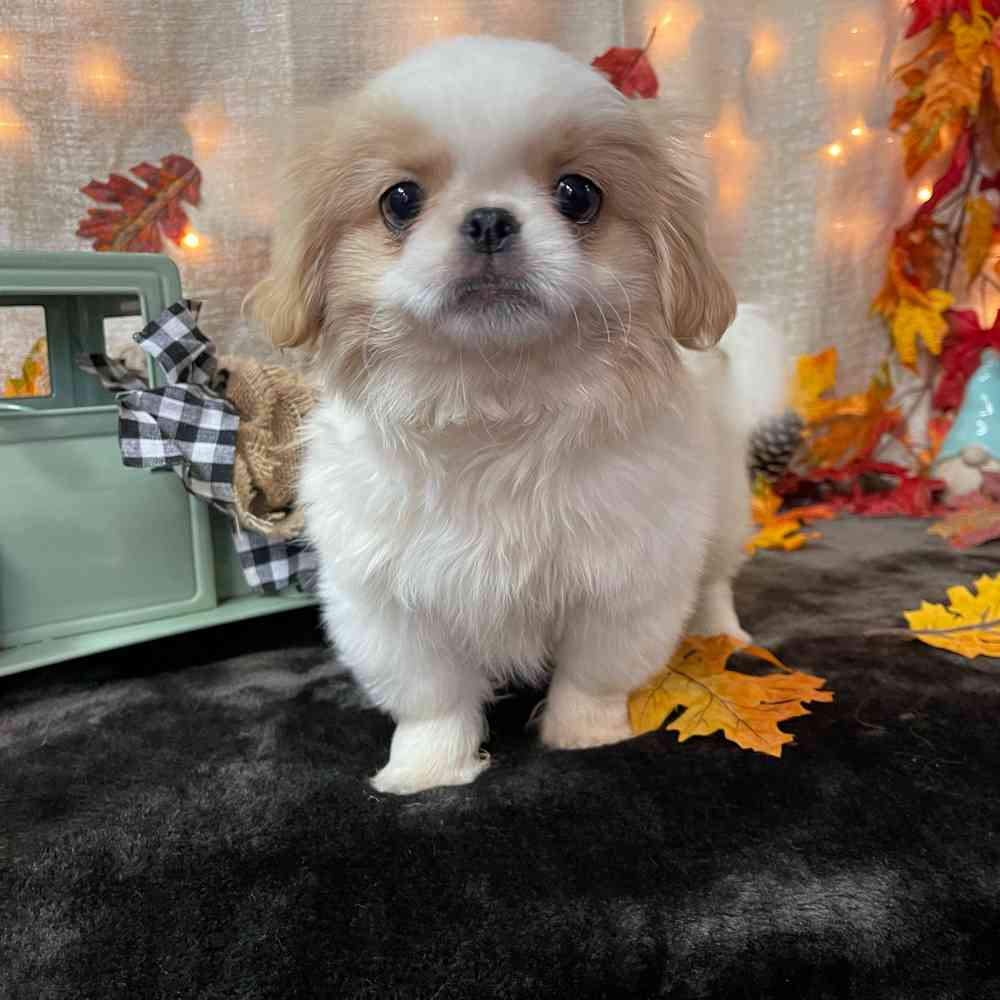


Apartment Friendly
AKC Registrable
Pekingese
The Pekingese, a compact toy companion of regal bearing and a distinctive rolling gait, is one of several breeds created for the ruling classes of ancient China. These are sophisticated dogs of undying loyalty and many subtle delights.
Available Pups
Puppy Knowledge
Breed Info
Clubs, Registries & Associations
American Canine Association Continental Kennel Club Universal Kennel Club International American Kennel Club United All Breed Registry America's Pet Registry, Inc. United Kennel Club (Based on breed recognition. See store for details on this particular puppy.)
Group
Toy
Heritage
Chinese art from the 8th century shows their love of the Pekingese. Originating in Peking (now called Beijing), the Pekingese was considered a sacred dog and theft of this breed was punishable by death. Could be owned only by Chinese royalty, they were brought to Queen Victoria when the British conquered the Chinese Imperial Palace in 1860.
Personality
The Pekingese is courageous, curious, sensitive, wary of strangers but very loving with people they know. They are also intelligent, but mulish. Use only motivational training methods with a Pekingese with consistent humane leadership guidance. Teach them not to guard food and resources at an early age. They are good watchdogs, but not prone to barking. They do not trust children and should be in a home with older children who understand how to respect this breed. They love to snuggle and spend time with you.
Exercise/Energy Level
Requires a daily walk with off leash playing to keep them exercised. Insufficient exercise and walking can result in behavior issues with the Pekingese. Not tolerant of hot weather, however, and can be prone to heat stroke.
Additional Information
Grooming Requirements: Requires daily brushing and regular bathing. Clean this breed's face and eyes daily. Coat: Long and flowing. Shedding: Average shedding Hypoallergenic: No, due to shedding. Apartment Living: Good for apartment living and good couch potatoes in the house. Lap Dog: Yes Good With Children: Good with older children who understand how to respect a this breed. Good With Other Pets: Generally good with other pets when socialized well at an early age. Can be male-to-male dog aggressive.
Breed Standard
General Appearance
The Pekingese is a well-balanced, compact dog of Chinese origin with a heavy front and lighter hindquarters. Its temperament is one of directness, independence and individuality. Its image is lionlike, implying courage, dignity, boldness and self-esteem rather than daintiness or delicacy.
Size, Proportion, Substance
Size/Substance - The Pekingese, when lifted, is surprisingly heavy for its size. It has a stocky, muscular body. All weights are correct within the limit of 14 pounds. Disqualification: Weight over 14 pounds. Proportion - Overall balance is of utmost importance. The head is large in proportion to the body. The Pekingese is slightly longer than tall when measured from the forechest to the buttocks. The overall outline is an approximate ratio of 3 high to 5 long.
Head
Face - The topskull is massive, broad and flat and, when combined with the wide set eyes, cheekbones and broad lower jaw, forms the correctly shaped face. When viewed from the front, the skull is wider than deep, which contributes to the desired rectangular, envelope-shaped appearance of the head. In profile, the face is flat. When viewed from the side, the chin, nose leather and brow all lie in one plane, which slants very slightly backward from chin to forehead. Ears - They are heart-shaped, set on the front corners of the topskull, and lie flat against the head. The leather does not extend below the jaw. Correctly placed ears, with their heavy feathering and long fringing, frame the sides of the face and add to the appearance of a wide, rectangular head. Eyes - They are large, very dark, round, lustrous and set wide apart. The look is bold, not bulging. The eye rims are black and the white of the eye does not show when the dog is looking straight ahead. Nose - It is broad, short and black. Nostrils are wide and open rather than pinched. A line drawn horizontally over the top of the nose intersects slightly above the center of the eyes. Wrinkle - It effectively separates the upper and lower areas of the face. It is a hair-covered fold of skin extending from one cheek over the bridge of the nose in a wide inverted V to the other cheek. It is never so prominent or heavy as to crowd the facial features, obscure more than a small portion of the eyes, or fall forward over any portion of the nose leather. Stop - It is obscured from view by the over-nose wrinkle. Muzzle - It is very flat, broad, and well filled-in below the eyes. The skin is black on all colors. Whiskers add to the desired expression. Mouth - The lower jaw is undershot and broad. The black lips meet neatly and neither teeth nor tongue show when the mouth is closed.
Neck, Topline, Body
Neck - It is very short and thick. Body - It is pear-shaped, compact and low to the ground. It is heavy in front with well-sprung ribs slung between the forelegs. The forechest is broad and full without a protruding breastbone. The underline rises from the deep chest to the lighter loin, thus forming a narrow waist. The topline is straight and the loin is short. Tail - The high set tail is slightly arched and carried well over the back, free of kinks or curls. Long, profuse, straight fringing may fall to either side.
Forequarters
They are short, thick and heavy-boned. The bones of the forelegs are moderately bowed between the pastern and elbow. The broad chest, wide set forelegs and the closer rear legs all contribute to the correct rolling gait. The distance from the point of the shoulder to the tip of the withers is approximately equal to the distance from the point of the shoulder to the elbow. Shoulders are well laid back and fit smoothly onto the body. The elbows are always close to the body. Front feet are turned out slightly when standing or moving. The pasterns slope gently.
Hindquarters
They are lighter in bone than the forequarters. There is moderate angulation of stifle and hock. When viewed from behind, the rear legs are reasonably close and parallel, and the feet point straight ahead when standing or moving.
Coat and Presentation
Coat - It is a long, coarse-textured, straight, stand-off outer coat, with thick, soft undercoat. The coat forms a noticeable mane on the neck and shoulder area with the coat on the remainder of the body somewhat shorter in length. A long and profuse coat is desirable providing it does not obscure the shape of the body. Long feathering is found on toes, backs of the thighs and forelegs, with longer fringing on the ears and tail. Presentation - Presentation should accentuate the natural outline of the Pekingese. Any obvious trimming or sculpting of the coat, detracting from its natural appearance, should be severely penalized.
Coat
Coat - It is a long, coarse-textured, straight, stand-off outer coat, with thick, soft undercoat. The coat forms a noticeable mane on the neck and shoulder area with the coat on the remainder of the body somewhat shorter in length. A long and profuse coat is desirable providing it does not obscure the shape of the body. Long feathering is found on toes, backs of the thighs and forelegs, with longer fringing on the ears and tail. Presentation - Presentation should accentuate the natural outline of the Pekingese. Any obvious trimming or sculpting of the coat, detracting from its natural appearance, should be severely penalized.
Color
All coat colors and markings are allowable and of equal merit. A black mask or a self-colored face is equally acceptable. Regardless of coat color the exposed skin of the muzzle, nose, lips and eye rims is black.
Gait
It is unhurried, dignified, free and strong, with a slight roll over the shoulders. This motion is smooth and effortless and is as free as possible from bouncing, prancing or jarring. The rolling gait results from a combination of the bowed forelegs, well laid back shoulders, full broad chest and narrow light rear, all of which produce adequate reach and moderate drive.
Temperament
Affectionate, Loyal, Regal in Manner
Disqualifications
Weight over 14 pounds. The foregoing is a description of the ideal Pekingese. Any deviation should be penalized in direct proportion to the extent of that deviation.
Overview
About
Pekingese are compact, stocky toy dogs weighing up to 14 pounds. The coat is longest at the neck and shoulders, giving Pekes their famous “lion’s mane.” Coats come in various reds, from a golden-red to darker shades. The large, short-muzzled head is a wider-than-long “envelope shaped” rectangle, and the eyes are large, dark, and sparkly. A unique feature of Pekes is their effortless “rolling” gait. Pekes are charming, confident companions who develop a tight bond with their favorite human. Bred to live in palaces, they can be as serenely independent as the emperors who owned them. (They’re “opinionated,” Peke people say.) Ever alert, they make good watchdogs. Pekes will tolerate kids but won’t stand for a lot of roughhousing.
History
A Chinese legend says the Pekingese was created by the Buddha, who shrunk a lion down to dog size. The breed is of such antiquity that we will never know its true beginnings, but the fanciful origin myth does contain a grain of probable truth. The Peke was likely bred down to toy size from a larger dog, not by the Buddha, of course, but by his earthly servants, the Chinese emperors and their courtiers. For many centuries, Chinese nobles were preoccupied with the breeding of flat-faced lapdogs. The Peke, Pug, and Shih Tzu are surviving samples of their handiwork. It is said that stealing one of these dogs was a crime punishable by death. Pekes were unknown to the West until 1860, when British troops invaded Peking (Beijing) during the Opium Wars. As the Brits stormed the emperor’s magnificent summer palace with the intention of looting and burning it, the royal family killed their Pekes rather than see them fall into enemy hands. A British captain discovered the emperor’s aunt dead, a suicide, but five of her Pekes were still alive, hiding behind a drapery. The dogs were returned to England as a gift for a delighted Queen Victoria, and the breed quickly caught on among her subjects. By the late 1890s, Pekes had arrived in America. They were first registered by the AKC in 1906. Six years later, the breed made headlines when a Pekingese was one of only three dogs to survive the sinking of the Titanic.
Standard
The Pekingese is a well-balanced, compact dog of Chinese origin with a heavy front and lighter hindquarters. Its temperament is one of directness, independence and individuality. Its image is lionlike, implying courage, dignity, boldness and self-esteem rather than daintiness or delicacy.
Nutrition
The Pekingese should do well on a high-quality dog food, whether commercially manufactured or home-prepared with your veterinarian’s supervision and approval. Any diet should be appropriate to the dog’s age (puppy, adult, or senior). Some dogs are prone to getting overweight, so watch your dog’s calorie consumption and weight level. Treats can be an important aid in training, but giving too many can cause obesity. Learn about which human foods are safe for dogs, and which are not. Check with your vet if you have any concerns about your dog’s weight or diet. Clean, fresh water should be available at all times.
Grooming
The thick double coat of the Pekingese requires a good bit of maintenance. Pekingese shed seasonally. Brushing him at least one hour per week will help to remove loose hairs and prevent matting, and an occasional bath will help to keep him looking his best. Mats or tangles can be gently worked out with a slicker brush or metal comb. As with all breeds, the nails should be trimmed regularly, as overly long nails can cause the dog discomfort.
Exercise
Pekingese are charming, confident companions who develop a close bond with their people. Their whole purpose in life is to amuse and comfort. Although they are fairly sedate most of the time and have only modest exercise requirements, they do enjoy participating in canine sports at their own pace.
Training
A hallmark of the breed is their friendly, outgoing, loving personality. Pekes are affectionate and intelligent and develop very strong connections to their people. As dogs who for centuries lived in palaces, Pekes can be as serenely independent as the emperors who owned them. (They’re “opinionated,” Peke people often say.) Ever alert, they make good little watchdogs. Pekes might tolerate children, but are not appropriate for children to roughhouse with.
Health
As with all short-faced breeds, it is important to choose a Pekingese with wide-open nostrils on a moderate-sized nose. Because Pekingese don’t have a long muzzle to act as a natural barrier of protection for the eyes, it is important to ensure that your environment is safe for your Peke and that nothing can jab or irritate his eyes. Pekingese appreciate cold temperatures, and therefore some owners travel with their Pekes on frozen ice packs, or an ice pillow, even for rides in the car, which provides a level of comfort that Pekingese thoroughly enjoy. Working with a responsible breeder, those wishing to own a Peke can gain the education they need to know about specific health concerns within the breed. Good breeders utilize health testing of their breeding stock to reduce the likelihood of disease in their puppies.
Trivia
Interesting To Know
Legend holds a story about a lion falling in love with marmoset. The lion prayed to Buddha to make him small enough to court the marmoset. Buddha granted the lion's wish and the union of the lion and the marmoset produced an offspring who retained the lion's form, gallantry and nobility combined with the mischievous face and mind of the marmoset – the Pekingese. Fifi, the Pekingese, was the girlfriend of Disney's Pluto.








